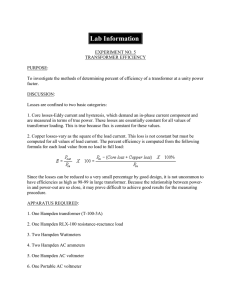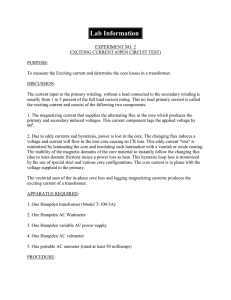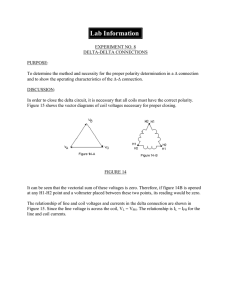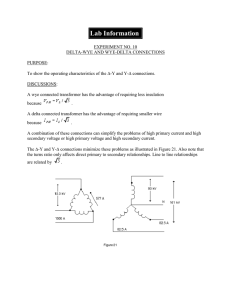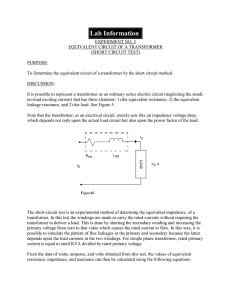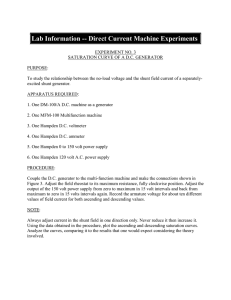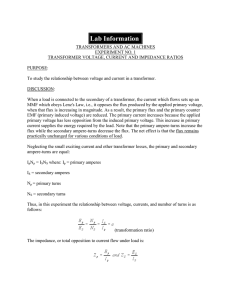Transformer Efficiency Experiment: Lagging Power Factor Loads
advertisement
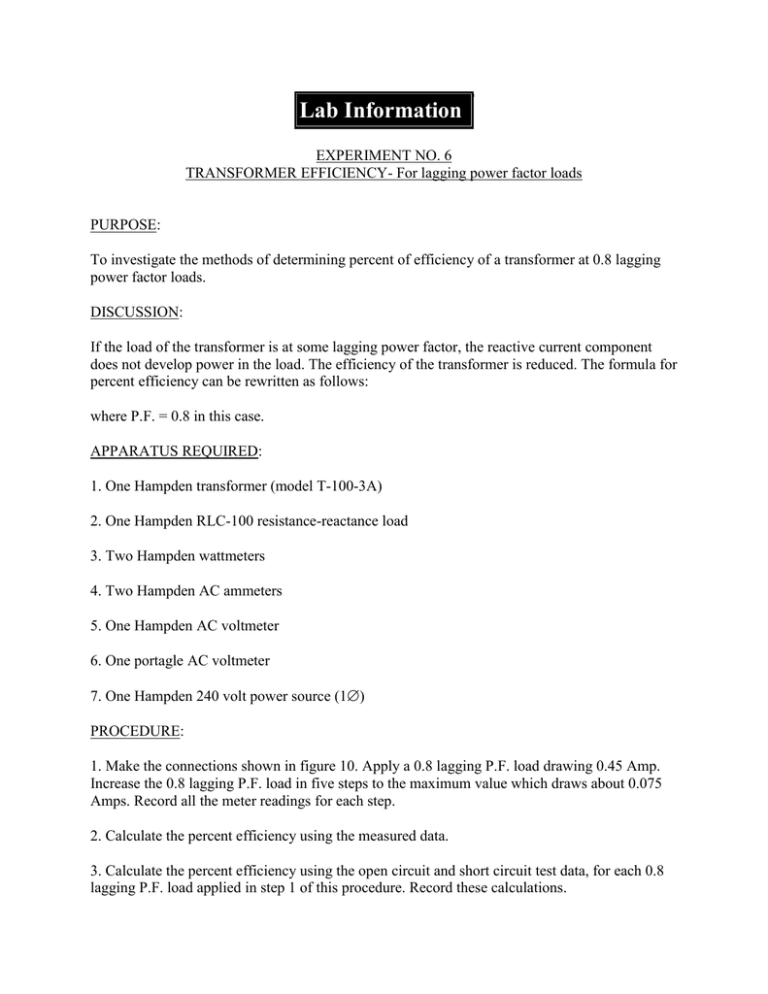
Lab Information EXPERIMENT NO. 6 TRANSFORMER EFFICIENCY- For lagging power factor loads PURPOSE: To investigate the methods of determining percent of efficiency of a transformer at 0.8 lagging power factor loads. DISCUSSION: If the load of the transformer is at some lagging power factor, the reactive current component does not develop power in the load. The efficiency of the transformer is reduced. The formula for percent efficiency can be rewritten as follows: where P.F. = 0.8 in this case. APPARATUS REQUIRED: 1. One Hampden transformer (model T-100-3A) 2. One Hampden RLC-100 resistance-reactance load 3. Two Hampden wattmeters 4. Two Hampden AC ammeters 5. One Hampden AC voltmeter 6. One portagle AC voltmeter 7. One Hampden 240 volt power source (1) PROCEDURE: 1. Make the connections shown in figure 10. Apply a 0.8 lagging P.F. load drawing 0.45 Amp. Increase the 0.8 lagging P.F. load in five steps to the maximum value which draws about 0.075 Amps. Record all the meter readings for each step. 2. Calculate the percent efficiency using the measured data. 3. Calculate the percent efficiency using the open circuit and short circuit test data, for each 0.8 lagging P.F. load applied in step 1 of this procedure. Record these calculations. REPORT: Prepare a written report to include the following items: 1. Calculations for step 1. 2. Circuit schematic 3. Tables of calculated and measured values. 4. Calculations for step 3. 5. Plots of secondary voltage an %E as abscissa versus the secondary current as ordinate for both steps 1 and 3. 6. Comparisons to results obtained in experiment 5. FIGURE #10 EXPERIMENT NO. 6
